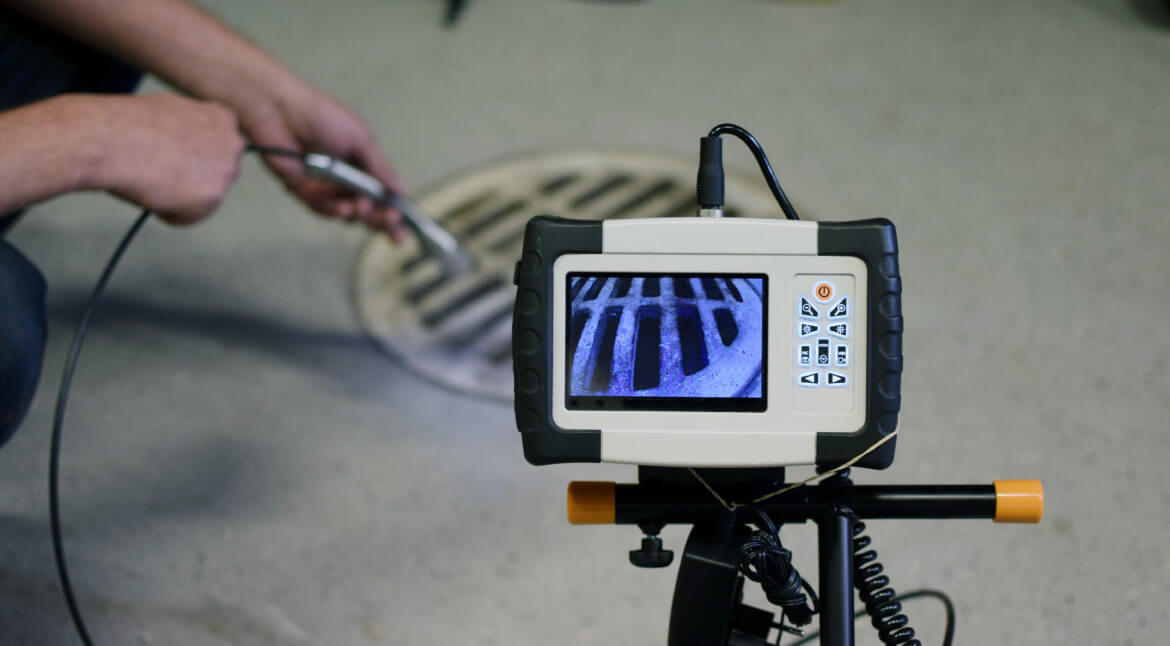If you are in the market for a new home, or if you have recently purchased a home, you may have heard about sewer line inspections. What is a sewer line inspection, and how do you know if you need one? A typical home inspection won’t cover plumbing, and you’ll want to be sure your new home’s plumbing system is in good shape before you sign the dotted line. A sewer line inspection can tell you about your potential new home’s plumbing system and identify any potentially costly problems before you complete all the paperwork.
Because plumbing is not covered in a typical home inspection, you may want to consider specifically checking the home’s sewer line with a camera sewer line inspection. In some jurisdictions, these inspections are required. Even if it’s not required where you live, a sewer line inspection is a wise move for a homebuyer to take before completing a home purchase transaction. Camera sewer line inspections are especially critical for older homes (homes which were built more than 10 years ago). Getting a camera sewer line inspection done before you buy a home will allow you to evaluate your potential new home’s plumbing system, and will identify any potential problems, including ones the seller might not even be aware of.
What is a camera sewer line inspection?
A camera sewer line inspection uses tiny waterproof cameras that are specially built for this function. Obtaining a camera sewer line inspection will give you a detailed visual inspection of the plumbing system and can spot potential problems early. Identifying any plumbing problems at this stage allows for them to be addressed before the title transfers.
To perform a sewer line camera inspection, a licensed plumber inserts a flexible rod equipped with a tiny high-definition video camera into a pipe. The rod travels through the pipeline as the camera transmits video footage of the pipe to a monitor so the plumber can closely inspect it for potential issues. The plumber can inspect an entire pipeline with detailed video footage for reference.
What might a camera sewer line inspection reveal?
- Tree roots – Tree roots are naturally attracted to water as a source of nourishment, and can work their way into small openings or compromised areas of the pipe. The roots then turn those smaller holes into bigger holes, which can cause leakage and potentially lead the pipes to rupture and cause total pipeline failure. Roots which have entered the pipe can also trap debris and cause a blockage; if this root problem is severe, you might need to replace the entire sewer line. Tree roots can grow substantially in 10 to 20 years, so this is a common problem with older homes.
- Old pipes – Homes that are older than 50 years likely do not have PVC pipes. If cast iron was used, the pipes may suffer from corrosion. Water materials can also calcify the interior of pipes, disrupting flow. Rusty pipes can also disintegrate or collapse, leading to total failure of your piping system. Clay pipes are even more susceptible to old age. As the ground moves, the joints between the clay pipes weaken and allow roots to invade the pipe. This could lead to a blockage or collapse.
- Thin walled PVC pipes – Even if the plumbing system does have PVC pipes, they might be older and have become brittle. When PVC piping was created in the 1980s, it was thin walled, and over time it was discovered that these pipes failed under pressure, resulting in a total plumbing pipe failure. If the house you are considering buying has thin walled PVC pipes, you may need to replace the entire plumbing system sooner rather than later.


